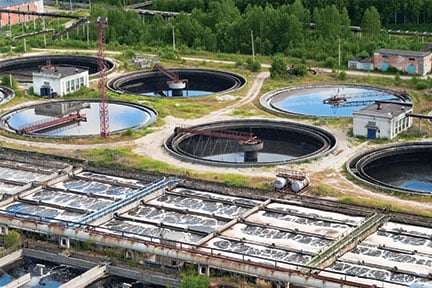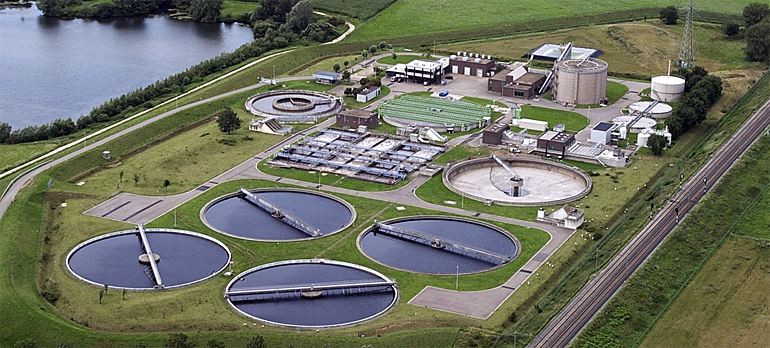Understanding Wastewater Therapy Processes and Their Ecological Effect
The ins and outs of wastewater therapy procedures play a critical role in mitigating ecological difficulties connected with water contamination. Each phase, from preliminary to advanced therapies, is developed to resolve specific pollutants, eventually guarding both public health and wellness and water communities.
Summary of Wastewater Therapy
Exactly how is wastewater transformed into a safe source for the setting? Wastewater therapy is a critical procedure created to eliminate contaminants from made use of water, consequently protecting public health and protecting ecological communities. This procedure begins with the collection of wastewater from household, commercial, and commercial resources, which is then directed to therapy facilities.
At these centers, various physical, chemical, and organic approaches are utilized to deal with the wastewater. Subsequently, organic therapies, such as activated sludge procedures, make use of bacteria to damage down organic matter.
The dealt with effluent can be safely discharged right into all-natural water bodies or reused for irrigation and commercial purposes, promoting source conservation. In addition, the treatment procedure generates biosolids, which can be repurposed as plant foods or soil changes, better enhancing sustainability.
Stages of Therapy Procedures
The wastewater therapy process commonly includes three key phases: preliminary, primary, and additional therapy. Each phase serves an unique duty in reducing the pollutant tons and guaranteeing the effluent satisfies ecological criteria before discharge.

The main treatment stage concentrates on the physical separation of suspended solids from the wastewater. Through sedimentation, heavier particles settle at the end of sedimentation tanks, forming sludge, while lighter materials, such as oils and oils, float to the surface area and are skimmed. This process considerably decreases the organic and inorganic lots in the wastewater.
Additional treatment is an organic process aimed at additional lowering the concentration of natural issue. This stage is essential for attaining the required biochemical oxygen need (BODY) reduction, inevitably leading to cleaner effluent prepared for discharge or further therapy.

Advanced Therapy Technologies
Following the second treatment procedures, advanced treatment technologies play a crucial role in additional enhancing the high quality of treated wastewater. These innovations are made to eliminate residual contaminants that are not efficiently removed during main and second treatments, making sure the effluent meets strict governing standards.
Among the extensively made use of advanced therapy approaches are membrane filtering, reverse osmosis, and progressed oxidation procedures. Membrane layer filtration, including microfiltration and ultrafiltration, is reliable in dividing fine particles, microorganisms, and colloids from the water (Wastewater). Reverse osmosis makes use of semi-permeable membrane layers to remove dissolved solids, resulting in high-grade water suitable for different applications
Advanced oxidation procedures (AOPs) utilize solid oxidants to break down organic pollutants, consisting of pharmaceuticals and personal treatment products that are resistant to standard therapy. These approaches enhance the biodegradability of complex compounds, facilitating their removal.
Another significant innovation is the usage of biological nutrient removal processes, which particularly target nitrogen and phosphorus, protecting against eutrophication in receiving water bodies. In general, sophisticated treatment innovations are crucial for accomplishing higher levels of filtration, advertising water reuse, and protecting public health and wellness while addressing the challenges related to wastewater administration.
Environmental Advantages of Therapy
Many environmental benefits emerge from effective wastewater treatment processes that add to ecosystem health and wellness and sustainability. Mostly, these procedures significantly reduce the look at this web-site release of harmful pollutants right into all-natural water bodies, which helps maintain water environments. By getting rid of impurities such as hefty steels, nutrients, and pathogens, treated wastewater reduces the danger of waterborne diseases and promotes biodiversity in aquatic settings.
In addition, wastewater therapy facilities frequently employ sophisticated technologies that enable water recycling and reuse. This technique not only conserves fresh water resources yet likewise decreases the demand on all-natural water materials. Boosted nutrient elimination from wastewater can also stop eutrophication, a process that leads to algal flowers and subsequent oxygen deficiency in aquatic systems.
Additionally, reliable treatment procedures can reduce greenhouse gas emissions, specifically methane and nitrous oxide, which are often launched during without treatment wastewater decomposition. By catching and making use of biogas from anaerobic digesters, facilities can transform waste into renewable resource, thereby contributing to a decrease in nonrenewable fuel source reliance.
Obstacles and Future Trends
While the ecological benefits of wastewater treatment are clear, numerous challenges continue that impede optimum outcomes in this field. One significant concern is aging facilities, which usually results in inadequacies and raised operational expenses - Wastewater. Lots of therapy plants were designed decades back, and their abilities do not straighten with modern demands, which include stricter regulative criteria and greater quantities of wastewater as a result of urbanization

Looking in advance, there is a growing emphasis on source healing and circular economic situation principles within wastewater treatment. Technologies such as anaerobic digestion, which can produce biogas, and progressed filtering technologies this content are getting check traction. These approaches not only enhance therapy efficiency yet likewise advertise sustainability.
Eventually, dealing with these obstacles needs collaboration amongst stakeholders, investment in modern technology, and a commitment to recurring research study. By welcoming these patterns, the wastewater therapy industry can evolve to satisfy the demands of an altering environment and society.
Verdict
In verdict, wastewater treatment processes play an essential function in boosting environmental high quality and public health. The multi-stage treatment structure, coupled with sophisticated technologies, efficiently minimizes pollution and advertises lasting water management. By resolving residual pollutants and reducing nutrition drainage, these processes add to the conservation of aquatic environments and the decrease of greenhouse gas emissions. Continued improvements and adaptations in treatment techniques will be vital for getting over arising challenges and making sure the sustainability of all-natural sources (Wastewater).